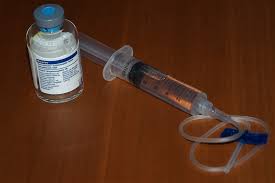Abstract
We compared recipients of eight lots of factors VIII and IX voluntarily withdrawn from distribution because one donor was known to have subsequently developed the acquired immunodeficiency syndrome with a nonexposed cohort matched by age, sex, and factor use. The factor VIII recipient cohorts did not differ in prevalence of antibody to human immunodeficiency virus (HIV) (exposed, 75%; nonexposed, 86%), T-cell subset numbers (median: exposed, 619 T-helper cells per cubic millimeter; nonexposed, 659 T-helper cells per cubic millimeter), T-helper to T-suppressor ratios, or immunoglobulin levels. Exposed individuals had higher levels of immune complexes by C1q binding and staphylococcal binding assays and lower responses to phytohemagglutinin and concanavalin A. However, only the staphylococcal binding assay values were outside the normal range for our laboratory. Factor IX recipient cohorts did not differ in HIV antibody prevalence (exposed, 30%; nonexposed, 40%) or any immune tests. Although exposed and nonexposed individuals did not differ from each other in a clinically meaningful fashion at initial testing, both the exposed and nonexposed cohorts had high rates of HIV seroprevalence. Market withdrawals were clearly insufficient means of limiting the spread of HIV in hemophilic patients; however, the currently available methods of donor screening and viral inactivation of blood products will prevent continued exposure within this population.
Jason J, Holman RC, Dixon G, Lawrence DN, Bozeman LH, Chorba TL, Tregillus L, Evatt BL
JAMA 1986 Oct;256(13):1758-62
PMID: 3018305
Jason-JAMA-1986-256-hemophilia-cohort-study